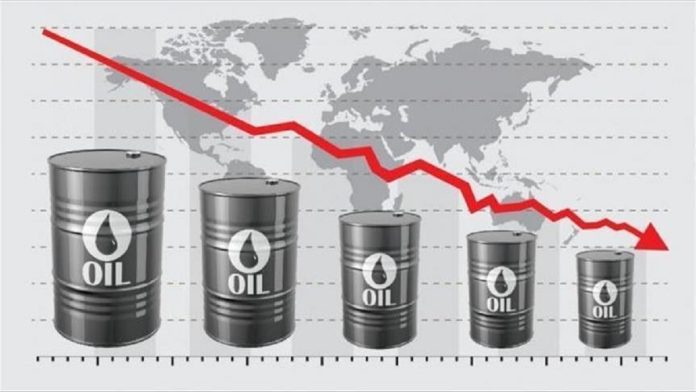Oil Prices Slump Ahead of OPEC Report
Oil prices ahead of the Organisation of Petroleum Exporting Countries (OPEC) monthly oil market report, which will include its latest outlook for 2024. The report is expected to shed some light on whether OPEC’s numbers suggest the need to roll over current voluntary cuts into 2Q24, ING said in a note.
Brent declined by 0.77% to $77.68 per barrel from $78.29. The American benchmark, West Texas Intermediate (WTI), traded at the same time at $71.85 per barrel, down 0.92% from Tuesday’s close of $72.52 per barrel.
The US dollar’s strength, following the Federal Reserve’s hints at less aggressive interest rate cuts, has made oil more expensive for buyers using other currencies, potentially dampening demand.
China is a key player in global oil consumption, but its 5.2% growth rate in the last quarter of last year was less than projected, casting doubt on the predicted surge in oil demand, according to figures released by China’s National Bureau of Statistics (NBS).
China’s oil refinery activity, however, increased significantly in December, indicating a continued, if not accelerated, oil demand.
The NBS data revealed that China’s oil refinery activity surged to record levels in 2023, marking a significant turnaround from the previous year’s decline.
China processed around 734.8 million metric tons of crude oil last year. This figure translates to approximately 14.7 million barrels per day (bpd), a sharp increase from the 13.5 million bpd recorded in 2022.
Oil markets continue to trade in a fairly range-bound manner despite developments in the Middle East, ING commodities strategists said in midweek note.
The Houthis have attacked another commercial vessel in the Red Sea, while the US has carried out further strikes against the Houthis in Yemen.
And more shippers have announced that they will be avoiding the region. A broader risk-off move seems to have held oil back after comments from a Fed official appear to question market expectations for as many as six rate cuts in 2024.
The USD also rallied, while US treasury yields moved higher. Red Sea disruptions also appear to be having an impact on middle distillate east-west arbs with them widening.
Europe’s reliance on middle distillates from the Middle East and Asia has grown since the Russia/Ukraine war, and obviously, with developments in the Red Sea, shipments will be taking longer to get to Europe, offering relative support to European middle distillates.
Freezing cold weather conditions in the US has led to oil supply disruptions in the Bakken in North Dakota with as much as 650k b/d of production offline, which is around half of the state’s output.
In addition, freezing conditions have also had an impact on refinery operations in Texas, with several refiners reducing run rates. Production declines in the Bakken has provided some upside to physical oil differentials for the region.
The EIA released its latest Drilling Productivity Report yesterday in which it forecasts that US shale oil production will fall by 2k b/d month on month to 9.68m b/d in February, while shale gas production is forecast to fall 187mmcf/day to 98.89bcf/day.
Meanwhile, the number of drilled but uncompleted wells (DUCs) fell by 64 MoM to 4,374 at the end of December. Whilst drilling activity picked up slightly over the month, it was still lower than the pace of well completions.
US natural gas came under significant pressure yesterday with front-month Henry Hub futures settling more than 12% lower. While large parts of the US are seeing freezing conditions, the weather forecast is for milder weather later this month. Nigeria Eurobond Slumps after CBN Resumes OMO Auction
.









